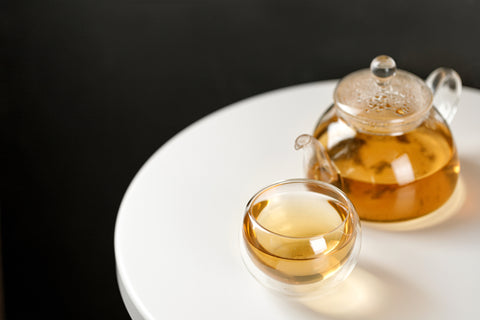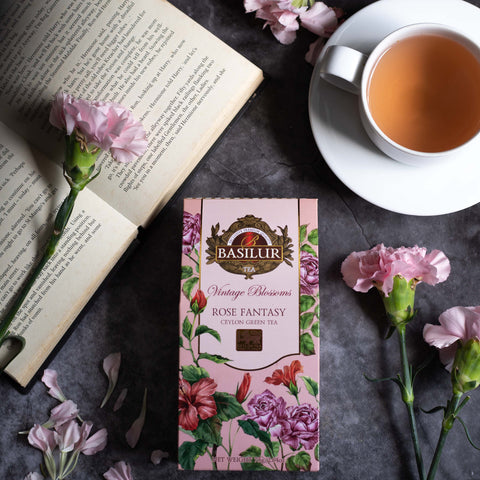Most people around the world are familiar with black tea and green tea, however, when it comes to white tea, people still wonder: “Is white tea, white in colour?”. No, white tea is not white in colour. In fact, it comes from the same tea plant as all other types of tea, the Camellia Sinensis. Different processing methods in turn lead to 6 different types of tea - white tea, yellow tea, green tea, oolong tea, black tea and pu-erh tea.
White tea is the least processed and the most natural tea among the different types of tea, with only 2 simple steps – withering and drying. As a result, silvery-white downy hairs/trichomes remain visibly present on the leaf buds, which gives white tea its name! Since it is minimally processed, white tea retains the beneficial compounds originally present in fresh tea leaves to the greatest extent. White tea contains a high concentration of polyphenols, a powerful antioxidant that promotes health, prevents diseases, and strengthens the body’s immune system.
A quick look at the history of White Tea
For many years it was believed that white tea was discovered during the Song Dynasty (920-1269), however, even earlier references to white tea have been traced as far back as the Tang Dynasty (618-907). At that time in history, white tea preparation was a very different experience than it is today: early harvest white tea leaves appeared solely in compressed cakes and broken pieces were steeped in earthenware kettles.
Although white tea was popularised and widely revered in the Song Dynasty (960-1269), it was relatively unknown to the rest of the world until very recently. Only royals were allowed to consume white tea and it is rumoured that it could only be served as a “tribute” to the emperor by virgins with white gloves as a symbol of honour and respect.

How to brew white tea?
Brewing white tea can be quite different when compared to black or green tea. White teas are best brewed with a milder water temperature between 175°-185° F. The leaves of the tea can overcook and become astringent if the water is too hot. For best results, we recommend brewing white teas for 1-3 minutes only.
How much caffeine is there in white tea?
Traditionally, white tea has been thought to have less caffeine than other tea types. However, some recent studies have pointed to the possibility of white tea having even greater caffeine content than black tea. Regardless of which theory you believe in, because white teas are typically steeped for a shorter amount of time than more processed teas, the caffeine content present in each brew tends to be significantly less, therefore reinforcing the idea that white teas are less caffeinated.
Introducing Basilur’s White Tea Collection!

Basilur presents this gloriously luxurious collection of White tea, masterfully blended with delicious natural fruit flavours. Each tea is a representation of the unique characteristics and the smoothness of White tea as the star ingredient. Ideal for gift giving and to elevate your everyday cup of tea!




Comments (0)
There are no comments for this article. Be the first one to leave a message!